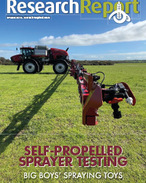This article is 6 years old. Images might not display.
A stock containment area (SCA) is a carefully selected, fenced section of the property which is set up to periodically hold, feed and water livestock.
They are primarily used to protect soil and pasture resources during adverse seasons such as after a fire, during droughts or late autumn breaks.
Careful planning is required and stock containment areas used for emergency, seasonal or supplementary feeding are considered grazing animal production under the Victorian Grazing and Intensive Animal Production Guidelines.
Under this definition, a permit is not required to build or operate a SCA used for emergency, seasonal or supplementary feeding of livestock in most rural zones.
Refer to the Victorian Grazing and Intensive Animal Production Guidelines, September 2018 or go to www.planning.vic.gov.au/policy-and-strategy/planning-reform/sustainable-animal-industries for more information.
It is important to note that a planning permit for buildings and works is required for fixed feeding infrastructure (for example, fixed feeding troughs) used for seasonal or supplementary feeding located within 100 metres of a dwelling not in the same ownership, waterway, residential zone or Urban Growth Zone.
Benefits of SCAs include:
* ready access for feeding, watering, monitoring and handling stock
* contain weeds brought on to the property with imported feed
* control of livestock when large areas of the farm require fencing (i.e. following a fire or other emergency)
* enable faster pasture recovery in paddocks after drought or fire
* reduce soil erosion or damage to paddocks during a drought or dry conditions
* provide quarantine areas for introduced stock
* pasture maintenance or improvement due to the ability to rest paddocks and allow pasture to recover
* improvement or maintenance of stock condition
* close monitoring and management of animal health
* better use of labour and feeding resources (less time spent feeding, and better management of stock nutrition)
* efficient way of supplying quality water to stock.
Agriculture Victoria says SCAs should be sited to minimise any environmental or amenity risk and to maximise animal welfare and production efficiencies.
Siting considerations for SCAs include:
* if located within a Declared Water Supply Catchment the SCA should be sited 800m from a potable water supply, the take-off points or a bore supplying potable water
* adequate setbacks from other waterways to minimise nutrient runoff risk
* adequate setback from neighbouring houses to mitigate dust and odour impacts, with consideration of the prevailing wind direction
* adherence to planning requirements for fixed feeding infrastructure located within 100 metres of a dwelling not in the same ownership, waterway, residential zone or Urban Growth Zone
* sited on moderately sloping, well-drained, stable soils such as a clay or clay loam
* construction across the slope to align with the natural contour of the land and to avoid pen to pen drainage
* access to existing shade and shelter for the stock
* avoid areas with high value remnant vegetation
* access to good quality water
* close proximity to handling facilities
For more information for managing during drought and dry seasonal conditions, and case studies on SCAs visit www.agriculture.vic.gov.au/dryseasons























